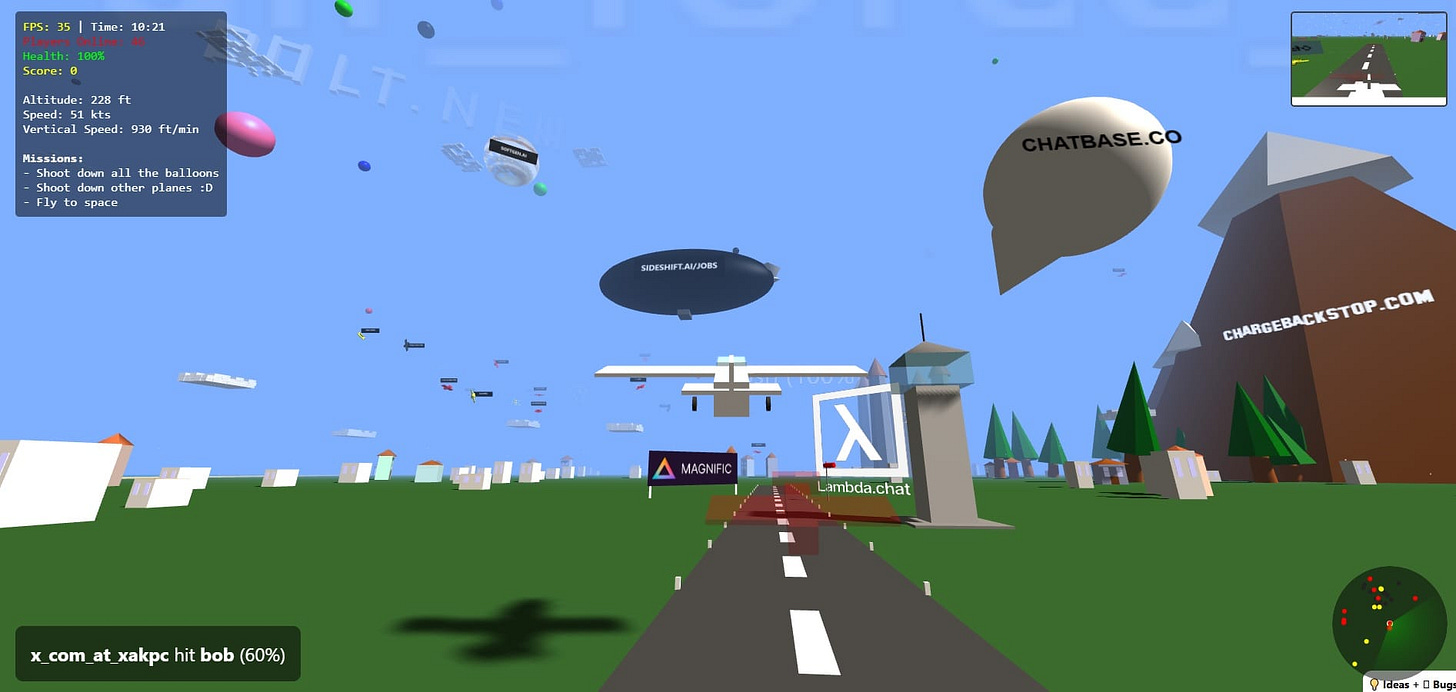Is Photoshop Dead? 💀 Google, Nvidia, OpenAI, and the "Vibe Coding" Boom 🔥
PLUS: See how AI is changing everything from image editing and coding to wildfire detection and data centre design.
👋 This week in AI
Google's Gemini and Gemma 3, the rise of "vibe coding," FireSat launches, Adobe's AI marketing hub, Nvidia's GTC revelations, and OpenAI's lobbying efforts.
🎵 Podcast
Don’t feel like reading? Listen to the podcast instead.
📰 Latest news
Sleeping Giant No More: Google's AI Redemption
The company is shipping a rapid-fire succession of AI updates, transforming the Gemini app and API, and introducing Gemma 3, a powerful new family of open models.
New Gemini Capabilities:
Deep Research: Now available to all users, powered by an improved underlying model.
Personalisation: Uses Google search history to tailor responses.
Canvas: A collaborative workspace for document and code editing.
Audio Overview: Generates podcast-style summaries of uploaded files, a feature popularised by Google's NotebookLM.
Image Editing: Natural language image editing via the API and Google AI Studio, featuring multimodal input and improved text rendering, powered by the experimental Gemini 2.0 Flash.
Separately, Gemma 3 introduces lightweight, open models (1B, 4B, 12B, and 27B) designed for efficient on-device performance.
Why it Matters
Features like the collaborative "Canvas" and "Audio Overview" (borrowed from the well-received NotebookLM) aim to improve user productivity.
The natural language image editing capabilities within Gemini are generating considerable interest, with some users suggesting a potential challenge to established tools like Photoshop due to its ease of use.
More significantly, Google's current rapid pace of innovation contrasts sharply with its earlier, more hesitant approach to the AI market. Previous missteps and product launches that didn't meet expectations, even contributing to significant drops in Google's share price, are now being superseded by a consistent stream of new products and updates.
This accelerated release schedule demonstrates a renewed focus on maintaining a leadership position in the rapidly evolving AI landscape.
From Text to App: Vibe Coding Transforms Software Creation
"Vibe coding" (using natural language to generate code) is emerging as a distinct approach to software and game development. It leverages AI-powered platforms, such as Cursor, Replit, Lovable, and Bolt.new, to translate natural language instructions into functional code.
This significantly lowers the technical barrier to entry, enabling individuals without extensive coding experience to build applications and games. Roblox's recent release of Cube 3D, an open-source generative AI model, aligns with this trend.
Cube 3D allows users to generate high-fidelity 3D models directly from text prompts. The beta version, now available in Roblox Studio and as a Lua API, is expected to significantly accelerate the development of AI-coded games by streamlining the creation of complex 3D assets.
The rise of Vibe Coding is also highlighted by the upcoming 2025 Vibe Coding Game Jam. Industry leaders, such as the creator of ThreeJS and Andrej Karpathy, will judge the competition.
Why it Matters
Vibe coding is democratising game development, making it significantly more accessible. Aspiring creators, regardless of coding proficiency, can now rapidly prototype and bring their game ideas to life. The speed of development is a key benefit.
The website fly.pieter.com went live and gained 320,000 users, reaching a $1 million Annual Recurring Revenue (ARR) in a mere 17 days. This highlights the potential for rapid iteration and deployment.
Vibe coding is also the first glimpse of how text-to-app gen will change how we use technology, with the reduction of development time to minutes instead of months, one-time use apps will explode, you can now have a bespoke app to meet your needs.
Established vibe coding platforms are experiencing substantial commercial growth:
Cursor achieved $100 million ARR in 12 months, with 360,000 paying developers and 40,000 paying customers.
Lovable reached $17 million ARR in three months, processing over 1,000 product builds daily.
Bolt.new achieved $20 million ARR in two months with over 2 million user registrations.
While vibe coding accelerates initial development, it is noted that the AI-generated code often requires review and refactoring by experienced developers to ensure optimal performance, security, and maintainability before being deployed in a production environment.

The rise of AI-assisted coding is also impacting the job market for software developers, with a marked 35% decline in traditional software development job listings over the past five years.
This trend suggests a shift towards smaller teams leveraging AI tools, and potentially new roles focused on refining and securing AI-generated code.
Spotting Fires Faster From Space: FireSat Launches
Google Research and Muon Space have launched the first FireSat satellite, part of a planned constellation designed for early wildfire detection. This AI-powered system can identify fires as small as 5x5 metres, a significant improvement over existing satellite capabilities.
The full constellation, planned to include over 50 satellites, aims to provide near-global coverage, scanning most of the Earth's surface every 20 minutes.
The project is a collaboration with the Earth Fire Alliance, supported by funding from Google.org and the Moore Foundation.
Why it Matters
A shift towards much faster wildfire detection is now possible. FireSat's ability to quickly spot small fires allows for quicker emergency response, potentially containing blazes before they escalate.
The system will also provide a comprehensive global record of fire behaviour, key for improving scientific understanding and modelling of wildfire patterns. This will aid in more effective wildfire prevention and mitigation strategies.
Adobe: The New AI Hub for Marketing Automation and Agents?
Adobe is positioning itself as the central AI hub for marketing automation and asset creation with its new Experience Platform Agent Orchestrator. This system manages AI agents across Adobe applications and third-party platforms, streamlining tasks like audience targeting, content production, and site optimisation.
The platform integrates with Adobe Firefly and GenStudio, enhancing generative AI capabilities for content workflows. Key partnerships with firms like AWS, Microsoft, and SAP aim to improve cross-platform functionality.
Why it Matters
By focusing on "Customer Experience Orchestration" (CXO), Adobe is making a play to integrate creative and marketing processes using AI.
This unified approach offers businesses more personalised customer experiences, scaled efficiently. With the Agent Orchestrator, marketers have a centralised interface to potentially improve interactions.
Commercially, Adobe Experience Cloud's 50% year-over-year revenue growth and its support of over a trillion experiences annually show strong market presence, potentially solidified by it's AI.
New AI Tool Re-Renders Video with Custom Camera Moves
ReCamMaster is a new AI framework that allows users to re-render existing videos with novel camera trajectories.
The system, developed by researchers from multiple institutions including Zhejiang University and Kuaishou Technology, uses pre-trained text-to-video diffusion models.
It is conditioned on both the original video and the desired camera movements. A large-scale multi-camera video dataset created using Unreal Engine 5 was used for training, facilitating its use on a range of input.
Why it Matters
ReCamMaster offers new possibilities for video editing and content creation. Key applications include video stabilisation (demonstrated with the DeepStab dataset), 4D reconstruction, and data augmentation for embodied AI and autonomous driving.
The ability to alter video perspectives using existing footage provides a shift towards more accessible and efficient data generation for AI training, and greater options for creative videography. The tool outperforms existing solutions in camera-controlled video generation.
Jensen Drops the Mic: Nvidia Unveils AI Roadmap to Conquer Every Industry
At GTC 2025, Nvidia CEO Jensen Huang delivered a keynote packed with major announcements, outlining the company's vision for the future of AI and its expanding role across various industries. Key reveals included:
New GPU Roadmap: Blackwell Ultra (late 2025), Vera Rubin (2026), and Feynman (2028), with substantial performance gains.
Increased AI Computational Demand: Huang stated AI needs "100x more" computation due to reasoning and agentic AI.
Robotics Advancements: Unveiled Isaac GR00T N1 (open humanoid robot foundation model) and the Newton physics engine (with Google DeepMind and Disney).
AI Workstations: Introduced DGX Spark and DGX Station, bringing data centre-grade AI to workstations.
Silicon Photonics: Announced their first co-packaged silicon photonic system.
Why it Matters
Nvidia's announcements are a significant acceleration and broadening of AI adoption across industries.
The dramatic increase in computational power (Blackwell's 40x inference performance over Hopper) enables businesses to tackle more complex AI tasks, particularly those involving reasoning and real-time decision-making.
The availability of powerful AI workstations (DGX Spark, DGX Station) lowers the barrier to entry for smaller businesses and individual researchers.
The concept of "AI factories" highlights a shift towards dedicated AI infrastructure, potentially leading to new business models and service offerings.
The push into robotics (Isaac GR00T N1, Newton) opens opportunities for automation in manufacturing, logistics, and other sectors.
Partnerships with major players like GM, Cisco, and T-Mobile indicate that AI is becoming integral to core business operations in automotive, networking, and telecommunications, accelerating the deployment of AI-powered solutions in these areas.
The introduction of co-packaged silicon photonics is key for building out future data centres.
Overall, Nvidia's roadmap points towards a future where AI is more pervasive, powerful, and accessible, driving significant changes in how businesses operate and compete.
OpenAI Urges Trump Administration: Minimal AI Regulation, Maximum Speed
OpenAI submitted a proposal to the US government for its "AI Action Plan," advocating for minimal regulation and rapid advancement in the field of AI.
The company calls for a "copyright strategy that promotes the freedom to learn," supporting the use of copyrighted material in AI model training.
OpenAI recommends a "voluntary partnership" between the government and the private sector, expressing opposition to "overly burdensome" regulations and pushing for the removal of bureaucratic obstacles like FedRAMP to accelerate government AI adoption.
Why it Matters
OpenAI's proposal seeks to shape US AI policy in a direction favourable to its business interests, promoting a less regulated environment. The emphasis on national security collaborations and the competitive threat from China's DeepSeek positions OpenAI strategically within the current political landscape.
President Trump's revocation of the previous AI executive order gives OpenAI a key opportunity to influence the new policy framework. The suggestion that its recommendations can get government access to new AI technologies 12 months earlier is notable.
This comes amid a backdrop of a potential $40 billion investment, a $260 billion valuation, and ongoing legal battles, notably with Elon Musk, a top advisor.







